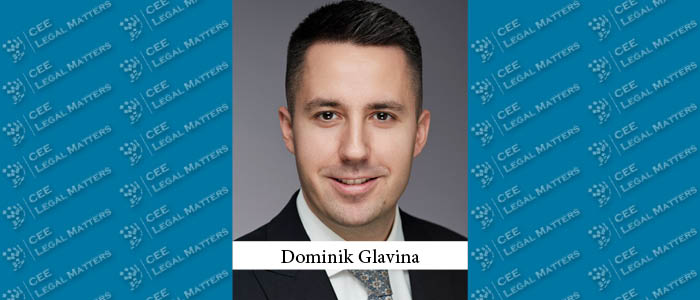One of the most important questions within every M&A deal is whether the transaction at hand is subject to merger clearance. The answer to said question might impact the timeline and (potentially) the successful completion of the deal itself. Up until Towercast cases (C-449/21), the analysis was straightforward by applying the clear turnover-based rules defining the applicability of the Regulation No 139/2004 (“Merger Regulation”).
During the due diligence phase, the potential acquirers would analyse turnovers of both the target company and their own. If the turnover thresholds were met, the potential acquirers would identify the obligation to obtain the merger clearance of the national competition authority or European Commission (as applicable). However, if turnovers were not exceeding the thresholds set by national or EU merger rules, the parties would conclude that transaction is not subject to merger clearance and continued with transaction process. But is it the end of story in terms of competition law? Not really, according to Court of Justice of the European Union (“CJEU”) in recent Towercast case.
The Towercast case has provided us with certain challenges as the CJEU was confronted with the question of applicability of Article 102 TFEU in cases where the transactions do not meet the requirements for EU and national merger control. The question was raised by the Paris Court of Appeal (France) in terms of whether Article 21(1) of the Merger Regulation (which is governing the Merger Regulation’s applicability and competent authorities) precludes a national competition authority from assessing a concentration which (i) has no Community dimension within the meaning of Article 1 of the Merger Regulation, (ii) is below the thresholds for mandatory ex ante assessment laid down in national law, and (iii) has not been referred to the European Commission under Article 22 of the Merger Regulation, as constituting an abuse of a dominant position prohibited by Article 102 TFEU, in the light of the structure of competition on a market which is national in scope. In other words, whether the deal may be subject to an ex-post review under Article 102 TFEU in cases where the national and EU thresholds are not met, i.e., if the deal represents an action that constitutes an abuse of dominance.
The respective question was related to Towercast’s complaint directed against the acquisition of control over Itas by TDF, the dominant operator on the market which transaction represented, in Towercast’s opinion, so called a “killer acquisition”. Having in mind the respective context, the submitted question for preliminary ruling is indeed of significant importance for the future assessment of potential acquisitions by the dominant companies. Especially having in mind recent strategies of strong, established companies (mostly in tech and pharma industry) acquiring innovative start-up companies solely for the purpose of elimination of their future competition.
The analysis and the judgement of the CJEU
In its judgement, CJEU followed Advocate General Kokott’s proposal to interpret the Article 21(1) of the Merger Regulation in such a way that it does not limit the application of Article 102 TFEU to cases where the transaction is not caught by national or European thresholds and ex ante merger control mechanisms. The CJEU additionally clarified that the temporal effects of the present judgment should not be limited retrospectively which means that rendered interpretation can be applied by the national authorities for the transaction that already happened in the past.
In its reasoning, CJEU has applied legal interpretation methods of the relevant acts according to the settled case law, i.e., the interpretation of a provision of EU law must take into account its wording, the context in which it occurs, as well as the objectives and purpose pursued by the act of which it forms part.
The CJEU reiterated that the objective of the Merger Regulation is to ensure that concentrations do not result in lasting damage to competition in the internal market. However, the CJEU concluded that it cannot, however, be inferred that the legislature intended to render the control carried out at national level on a concentration operation in the light of Article 102 TFEU devoid of purpose. The CJEU further pointed out that no exemption may be granted, in any manner whatsoever, in respect of abuse of a dominant position as such abuse is simply prohibited by TFEU. The list of practices and types of conduct contained in Article 102 TFEU is not exhaustive, so the list of abusive practices contained in that provision does not exhaust the methods of abusing a dominant position prohibited by EU law. As the prohibition laid down in Article 102 TFEU is sufficiently clear, precise, and unconditional, the CJEU clarified that there is no need for a rule of secondary law expressly prescribing or authorising its application by the national authorities and courts. Thus, the ex-ante control mechanism under Merger Regulation must be applied as a matter of priority, but it cannot preclude the possibility for a competition authority to capture a concentration operation under Article 102 TFEU under certain conditions.
Although the CJEU has not outlined specific guidelines for national authorities regarding the application of the Article 102 TFEU in cases where the transaction at hand is not subject to ex-ante control, the CJEU stated that it is for the authority in question to verify that a purchaser, holding a dominant position on a given market, and having gained control of another company in that market has, by that conduct, significantly impeded competition on that market. In that regard, the mere finding that an undertaking’s position has been strengthened is not sufficient for a finding of abuse, since it must be established that the degree of dominance thus reached would substantially impede competition – only undertakings who would remain in the market would be the ones whose behaviour depends on the dominant undertaking.
Practical implications of the Towercast case
Following the CJEU’s judgement in Towercast case, it looks like there are certain points left open which consequently result in legal uncertainties concerning M&A deals. The Towercast case had brought a lot of question marks over dealmakers’ heads as from now on the M&A practitioners should take into account the elements that up until now were not relevant for M&A deal.
First, the CJEU has provided only general guidance of the Article 102 TFEU application in respect of concentrations and has not provided any clear guidance to which acquisitions could constitute an abuse. As a result, the national competition authorities may review a wide range of transactions below the threshold.
Second, and this is quite a problematic one, the CJEU has not determined the time period in which transactions may be reviewed by the national competition authorities, i.e., how far back the authorities could look and review non-reportable transactions. By applying the general rules for statute of limitations in relation to any abuse of dominance case, a competition authority could go back for as long local prescription rules allow, starting from the date of the completion of the acquisition, which creates a great deal of legal uncertainty.
Third, the CJEU has not confirmed what could be the sanctions of determining that the acquirer (a dominant company) has abused its dominant position by completion of the transaction in questions. The question that comes up to mind is whether national authorities can impose structural remedies, for example a dissolution of a concentration, if the abuse of dominance by completion of the transaction is determined? Advocate General Kokott states that “in view of the primacy of behavioural remedies and the principle of proportionality, there is not usually a threat of subsequent dissolution of the concentration, but rather only the imposition of a fine”. However, it seems that nothing prevents the national competition authority to impose structural remedy (such as dissolution of the deal) if it considers that such remedy as being proportionate.
The effects of the Towercast case have already been visible in some EU member states where national authorities already started to apply “Towercast test”. In Proximus’ acquisition of EDPnet in Belgium, the Belgian competition authority, by referring to the Towercast case, adopted interim measures aiming at suspending the alleged abusive acquisition, after which it proceeded with further investigation. As a result, Proximus divested EDPnet Belgium to Citymesh, after which the Belgium competition authority closed the procedure.
Considering the mentioned competition uncertainties, the dominant companies should now carefully examine potential non-reportable acquisitions to see if they might be caught under dominance rules, especially by analysing the possibility of potential complaints by customers and its competitors. Finally, the transaction documents should contain provisions reflecting the possibility of ex-post control without a time limit. Nevertheless, it is yet to be seen how the “Towercast test” is to be applied by the national authorities in the EU member states.
By Dominik Glavina, Associate, Divjak Topic Bahtijarevic & Krka















